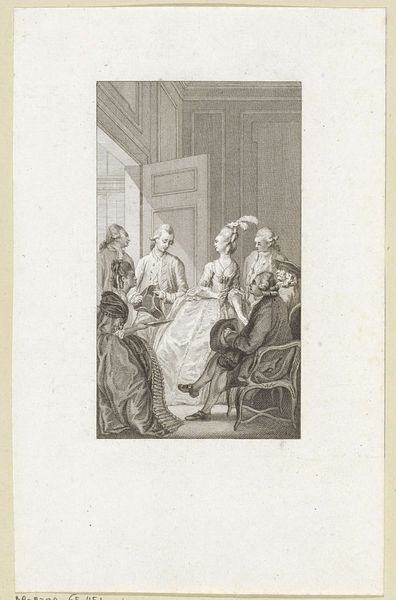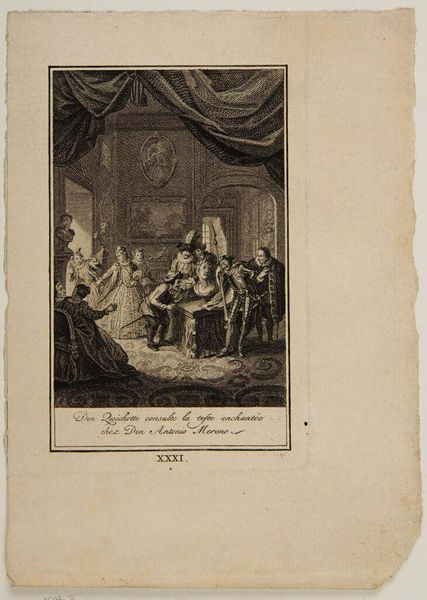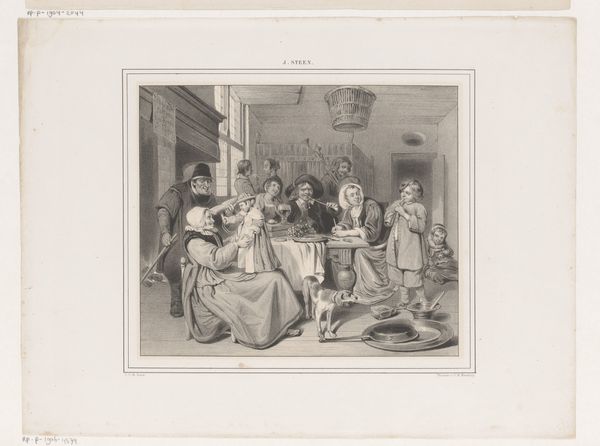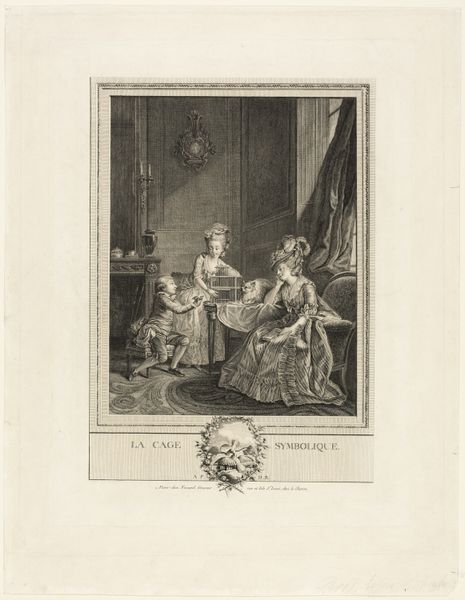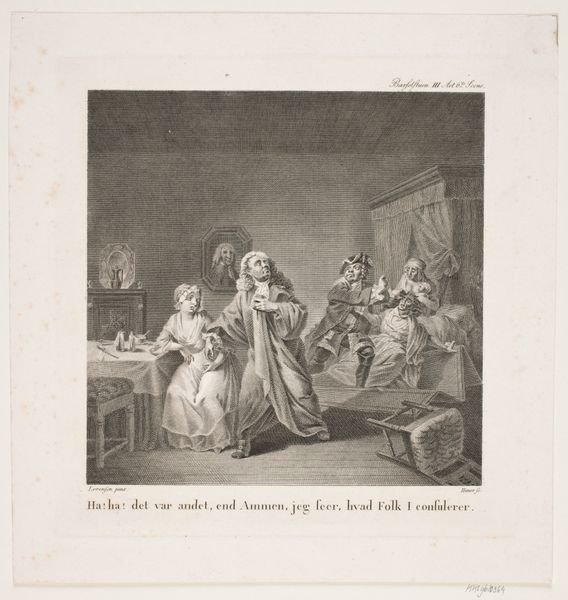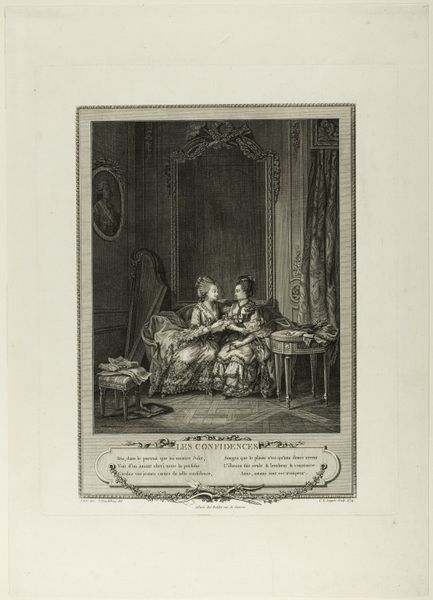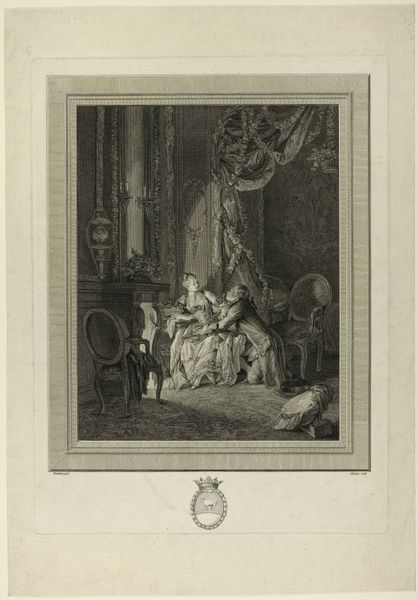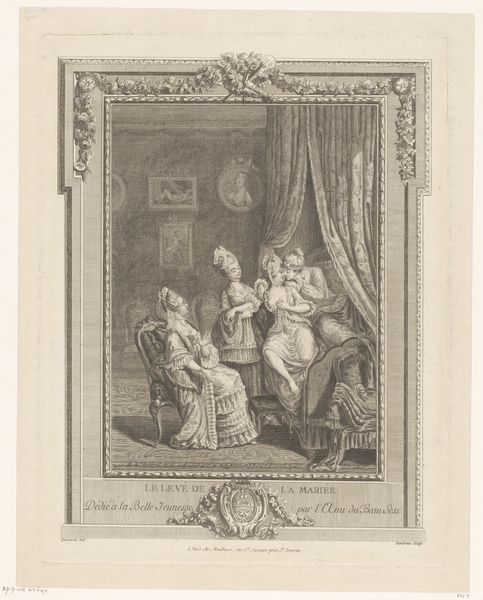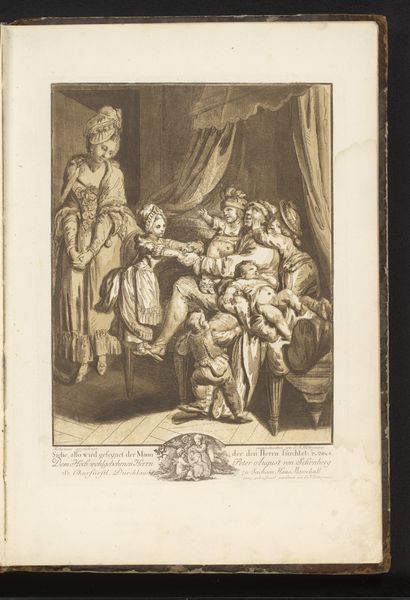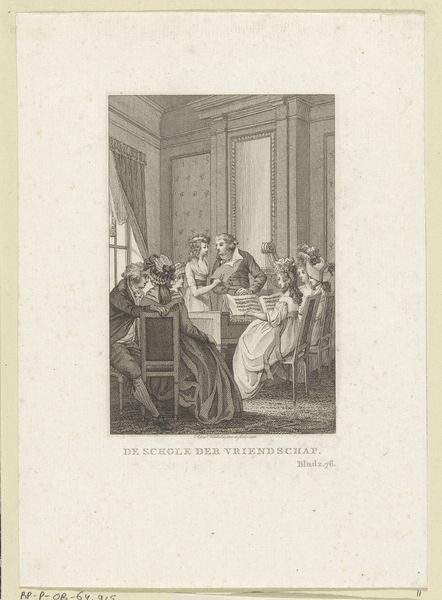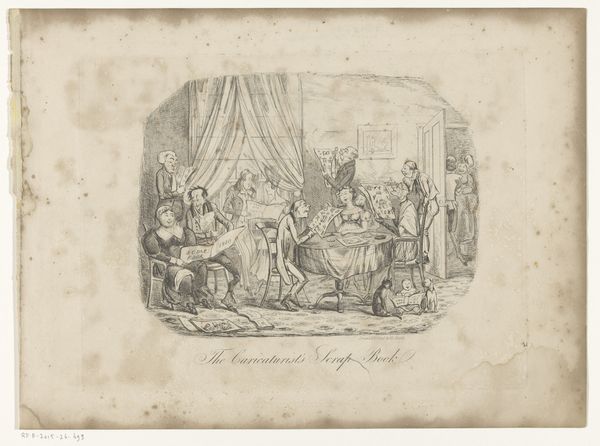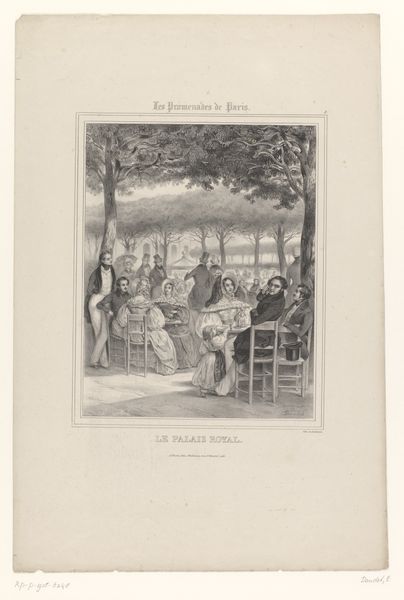
Don't Be Afraid, My Friend, from Monument du Costume Physique et Moral de la fin du Dix-huitième siècle 1776
0:00
0:00
drawing, print, etching, paper
#
drawing
#
narrative-art
# print
#
etching
#
paper
#
classicism
#
france
#
genre-painting
#
history-painting
Dimensions: 266 × 214 mm (image); 408 × 319 mm (plate); 540 × 409 mm (sheet, folded)
Copyright: Public Domain
Curator: This delicate etching is titled "Don't Be Afraid, My Friend," created around 1776 by Isidore-Stanislas Helman. Editor: It strikes me as immediately intimate, almost like glimpsing a private conversation. The light seems to gather around the central figure. Curator: Precisely. Helman captures a genre scene typical of late 18th-century France: an interior setting with fashionable figures engaged in quiet discourse. There is a real sense of elegance tempered with an almost playful unease. Editor: Yes, that 'unease' you mentioned—I can definitely sense that. I wonder, who is it intended for in the social context? The symbolism must reveal quite a lot. The standing man is an odd figure, bringing to mind the inevitable troubles with a marriage proposal or other clandestine interaction. Curator: Well, given its inclusion in the series *Monument du Costume Physique et Moral de la fin du Dix-huiti\u00e8me si\u00e8cle*, this print wasn’t just meant to be aesthetically pleasing; it also aimed to document the social customs, and moral values, or perhaps anxieties, of the era. Prints like these served a vital public function. They are disseminating information. Editor: So this print, more than just a pretty picture, becomes a mirror reflecting the societal obsessions with appearances, manners, and perhaps, repressed desires? Note also that despite its elegant frame, there are so many other frames within it; like a dream, it invites the viewer to speculate beyond face value. Curator: Absolutely. Helman uses the visual language of Classicism – a return to balance, clarity, and an ideal of beauty – but employs it here to comment on the real, often complex, lives of the French aristocracy just before the revolution. And the caption tells us the nature of this interior world. Editor: And within that language, that careful choreography of gesture and dress, we see the seeds of change and questioning begin to sprout. How does it resonate now in our visual landscape, I wonder? Does it still trigger similar responses or awaken old symbols? Curator: I think it reminds us of the lasting power of art to hold up a mirror to ourselves, our anxieties, and our ever-evolving social dramas. This serves as an invaluable historical record. Editor: And, to me, the interplay of light and shadow is a timeless metaphor for the secrets we all hold, regardless of the century.
Comments
No comments
Be the first to comment and join the conversation on the ultimate creative platform.
